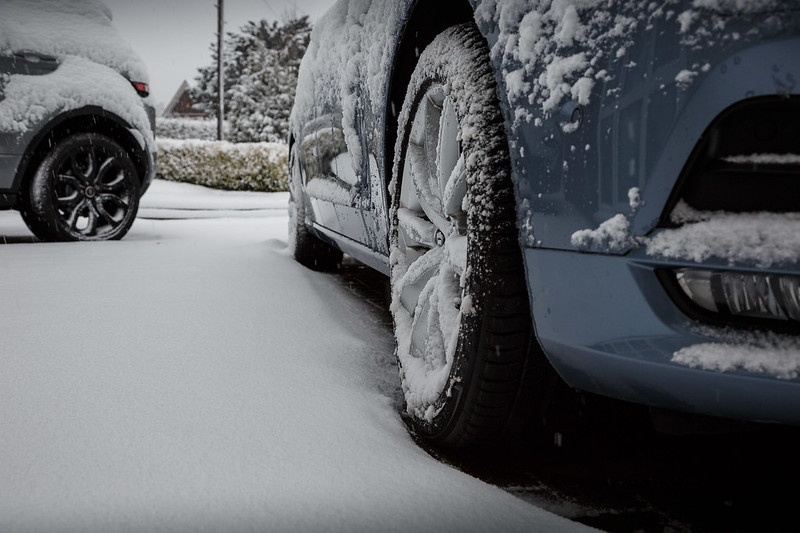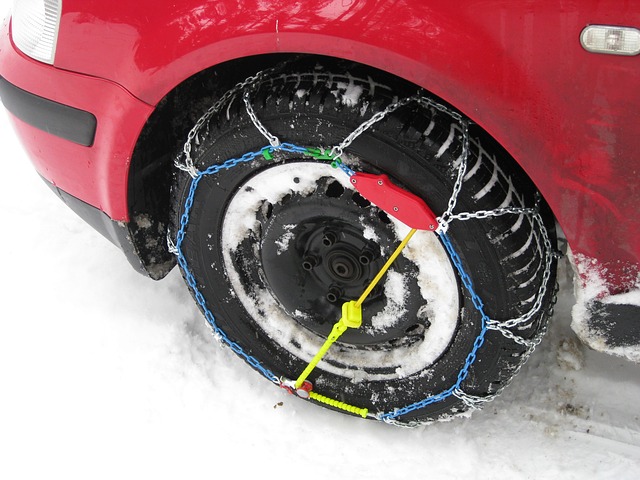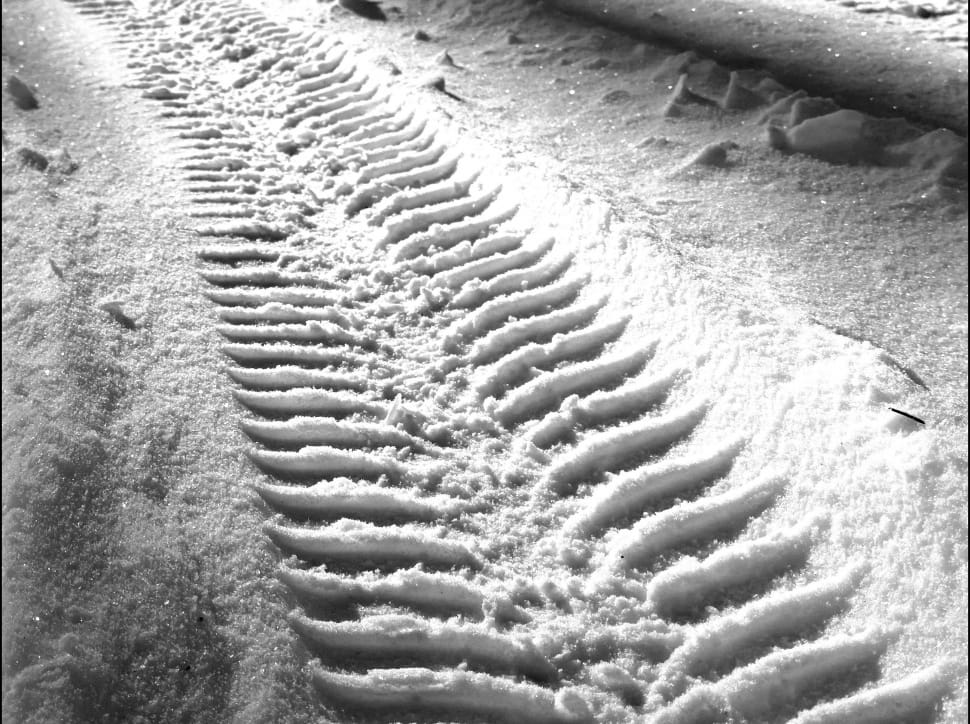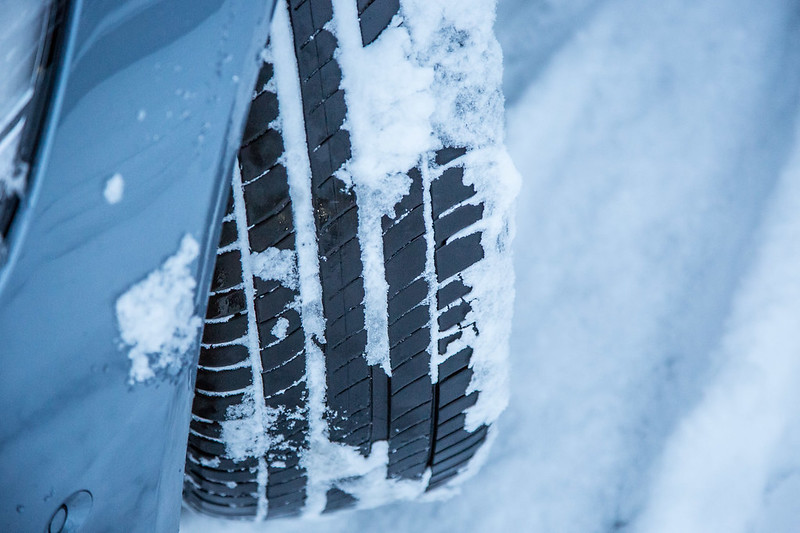Keep on rolling in winter
-
28 Oct 2019
-
Robyn Hamilton
-
Safety Advice Tyre Reviews
Now the clocks have gone back, winter is on the way and we all need to be prepared for the inevitable bad driving conditions over the next few months. With the nights drawing in and the dark mornings, many of us will now find ourselves driving in the dark more often, and then with the onset of plummeting temperatures we’re going to have more rain, and eventually the dreaded ice and snow is bound to occur. Of course when the weather is really bad, the best option is to simply avoid driving, but for most of us that simply isn’t possible. We have to drive, we need to get to work, the kids need to go to school and we have to get on with our lives as best we can despite the bad weather, so we have to make the most of it and take all precautions we can to keep ourselves and our families safe on the roads in winter.
What measures can you take to keep rolling in winter?
So what can you do to help make winter driving a little easier and less risky? Here in the UK, even though the adverse weather conditions predictably come around every year, it always seems to hit us unaware, and we simply don’t prepare for it like other countries do because the really atrocious weather only seems to last a short time. But if you do plan in advance, you’ll appreciate your efforts when that heavy snow falls and the roads are slick with ice.
Take care on the roads
It may seem obvious, but it’s worth pointing out that stopping distances massively increase in the wet, and can quadruple on ice, so when the weather is bad, being extra cautious is a must, even if you’re in a hurry. Visibility can be reduced, particularly at night, so a clean windscreen should be a priority.
Keep your car prepared
It’s not only accidents that are more likely to happen in the colder weather, but you’re also more likely to break down, so having an emergency pack in your car is well worth the effort. Keep water, snacks, blankets and a torch in your car and be sure to have the number of your breakdown company programmed into your phone. The UK government website has a handy checklist for preparing for winter driving here.
Snow socks and snow chains
Snow socks and snow chains can both be used when there is snow on the ground. They’re not so common in the UK as we don’t tend to get much thick and heavy snow on the roads, but they are legal to use and could be of benefit if you live in a rural area or on a road that doesn’t get gritted. If you’re travelling across Europe over the winter months then a set of snow chains could be a very worthwhile investment. However, when you get to road that is not snowy, you’ll need to remove them, so they can be inconvenient.
Give your car a winter health check
It’s this time of year when if something is going to go wrong with your car, it’s going to happen now. So if your car is due a service, it makes sense to get it booked in before winter truly sets in. if you have any concerns about your car’s battery, now is the time to get it looked at or replaced, and be sure to check your antifreeze. You’ll be using your lights a lot more in winter, so do check that all bulbs are fully working. Sometimes you just can’t really tell when you’ve got a light out when you’re driving. Be proactive, check them now, don’t wait for someone to flash you to be the first you know about a bulb out!
Check your tread depth
You should check your tread depth regularly anyway, but it’s even more important in winter when the roads may be wet or icy and you need all the grip you can get. If your tread depth is lower or close to the legal level of 1.6mm at any point on the circumference of your tyre, then you need to replace it asap.
Winter Tyres
Winter tyres are purpose made, not just for better grip and handling in ice and snow, but also for the wet, and for cold temperatures. When the temperature is lower than 7°C, winter tyres have a shorter stopping distance than standard tyres.
How do winter tyres work?
To look at them, you won’t see a great deal of difference between your summer and winter tyres, but the winter tyres are made from a softer rubber and have extra grooves, ensuring the generation of heat to give a greater level of traction on the road. The tread pattern will also differ from that of summer tyres, being optimised for dispersing slush and snow more easily. It’s important to fit all four wheels with winter tyres otherwise you could cause a dis-balance which could make you less safe on the road.
What are the legal requirements regarding winter tyres?
Currently there are no legal requirements to fit winter tyres to a vehicle in the UK. However, there are several European countries that do stipulate a legal requirement to fit winter tyres for several months of the year, generally from October to March, so if you are driving overseas you need to ensure you are adhering to the rules or you could risk receiving a fine. Some insurance companies require you to notify them if you are fitting winter tyres to your vehicle so it’s a good idea to check out if this is the case with your insurance company first as failure to inform them could invalidate your insurance and be a costly mistake should you need to make a claim.
Can you use winter tyres all year round?
While legally there is nothing stopping you using winter tyres all year round, it’s not recommended; as while your winter tyres will ensure you are safer on the roads when the temperatures are low, in higher temperature the reverse happens and your tyres will have less grip and traction and so be less safe than standard tyres. In addition, if you use winter tyres in warm weather, they will wear out faster and you will find yourself having to replace them more often. So it’s certainly safer and more cost effective to make the effort and swap your tyres over every six months.
Managing two sets of tyres
One thing that often puts drivers off swapping their tyres in winter is just what on earth do you do with your other set? If you don’t have a large shed or garage to store them in, then it may seem pretty impossible. You don’t want them outside, tyres need to be stored in a cool dry place and away from direct sunlight. One great solution is to look for a tyre fitter that offers storage facilities for you. For a small fee they will store the set of tyres you’re not using. There are also companies that rent tyres, so you can simply borrow the tyres you need for the duration of the winter months and swap them for summer tyres when the weather gets warmer.
If you’re storing your own tyres, then one tip is to make a note on the tyre as to which wheel it came from, so when the tyre is refitted to the vehicle, you can make sure it goes in a different position, and so even out the wear pattern. Do this and you should find you get a longer life out of your tyres. It’s also recommended that you wash and dry your tyres before putting them into storage.
Unless you have particularly large wheels and low profile summer tyres, it’s unlikely you’ll need two sets of actual wheels. Due to their tall side profile, winter tyres often have a problem fitting on very large wheels, but for most wheels generally you’ll have no problem simply swapping the tyres rather than the entire wheel.
Driving abroad this winter?
As we’ve already mentioned, many countries have very specific laws regarding the use of winter tyres. If you are hiring a car abroad, then it’s likely your hire car will be fitted with the correct tyres you legally need for your journey in that country, but don’t count on it. Always check your tyres and be sure of the legal requirements of every place you’re visiting. The laws change from country to country, but can also differ between regions within a country. In addition to laws stating that winter tyres are mandatory for certain periods of time, laws regarding legal tread depth are also different, so if you’re taking your own car overseas during the winter months, you need to be informed regarding these details too. A perfectly road legal tyre with a tread depth of 2.00mm in the UK would immediately become illegal should you drive into Austria for example, where the law states that the minimum tread depth is 4.00mm. In addition, in some countries it is a legal requirement to carry snow chains, and a shovel in the boot may also be mandatory, and lead to a fine if you are found not to be carrying one.
Check out this useful guide from Uniroyal Tyres listing all the European countries and their laws regarding winter tyres and more. Here you can discover the dates within which winter tyres are a legal necessity and any other related laws you’ll need to know when travelling.
Have a great winter on the roads
So get those winter tyres fitted, prepare your vehicle for winter and stay safe. Summer will be here again soon enough!





